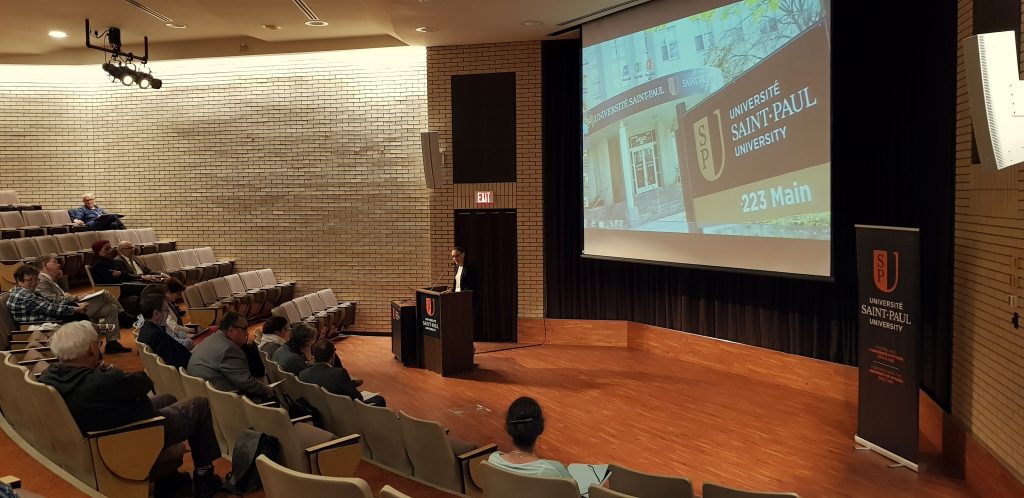
Northern-hemisphere summer is typically conference season in our field, and the conferences continued last week with the meeting of the Francophone Coptology Association (Association Francophone de Coptologie, or AFC) in Ottawa, Canada. Founded in 1982, the AFC is one of the world’s largest membership organisations for Coptic studies. French-speaking scholars have long been interested in Coptic – Jean-François Champollion, who deciphered hieroglyphs in the 1820s, claimed in a letter to have studied the language so much that he dreamed in Coptic, and the tradition of French-language scholarship, in countries such as Belgium, Switzerland, Canada, and of course, France, has remained vital to the present day.
The topics covered in the conference touched many aspects of Coptology – from archaeology and manuscript studies to the politics of modern Coptic music and “hagiopics”, popular films about the lives of saints; the full program may be seen here. One session, consisting of two papers, focused on Coptic magic, and it is this panel which we’ll discuss in the rest of this post.
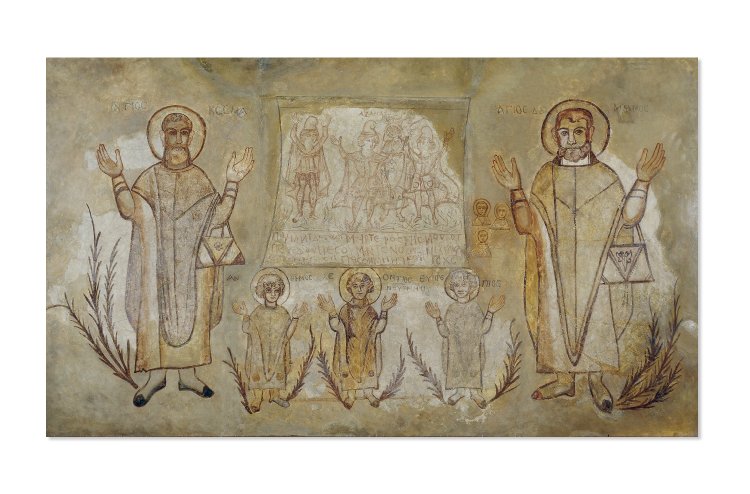
Roxanne Bélanger Sarrazin (Université d’Ottawa/Université Libre de Bruxelles) presented the first paper, on the “Three Hebrew Youths” in Coptic liturgy and magic. Sarrazin is currently preparing her doctoral thesis on “pagan” deities in Coptic magic, but she has already made a very important contribution to the field with her checklist of published Coptic magical texts, the most comprehensive to date.
The subject of her talk, the “Hebrew Youths” are three saints, Shadrach, Meshach, and Abednego, who appear in the Book of Daniel. Chapter 3 of this work recounts how they were Jewish boys living in exile in Babylon who refused to worship a golden idol created by King Nebuchadnezzar, and so were thrown into a furnace by the king as punishment. But when the king looked into the furnace, he saw them walking unharmed, and accompanied by a fourth, angelic figure. This miracle was often discussed by early Christian authors, and frequently depicted in art; it was understood as an example of the power of prayer and faith in God to overcome danger, as well as a model of sacrifice and salvation.
Alongside these public appearances, the Hebrew Youths are found in 16 published Coptic magical texts – 14 applied amulets, and two formularies (we explain the differences between these here). All of these texts seem to be intended to provide protection from fever, a major killer in pre-modern Egypt, which was understood as a kind of “fire” from which God could save the amulet’s wearer, just as his angel had saved the Hebrew Youths. The amulets typically contain the names of the Hebrew Youths – Hebrew names, Hanania, Mishael and Azaria, then their Babylonian names, Shadrach, Meshach and Abednego, and finally three names known only from the Coptic magical tradition, usually Lal, Moulal, and Boulal. These last names vary greatly between copies, and seem to be understood as the “magical” names of the saints.
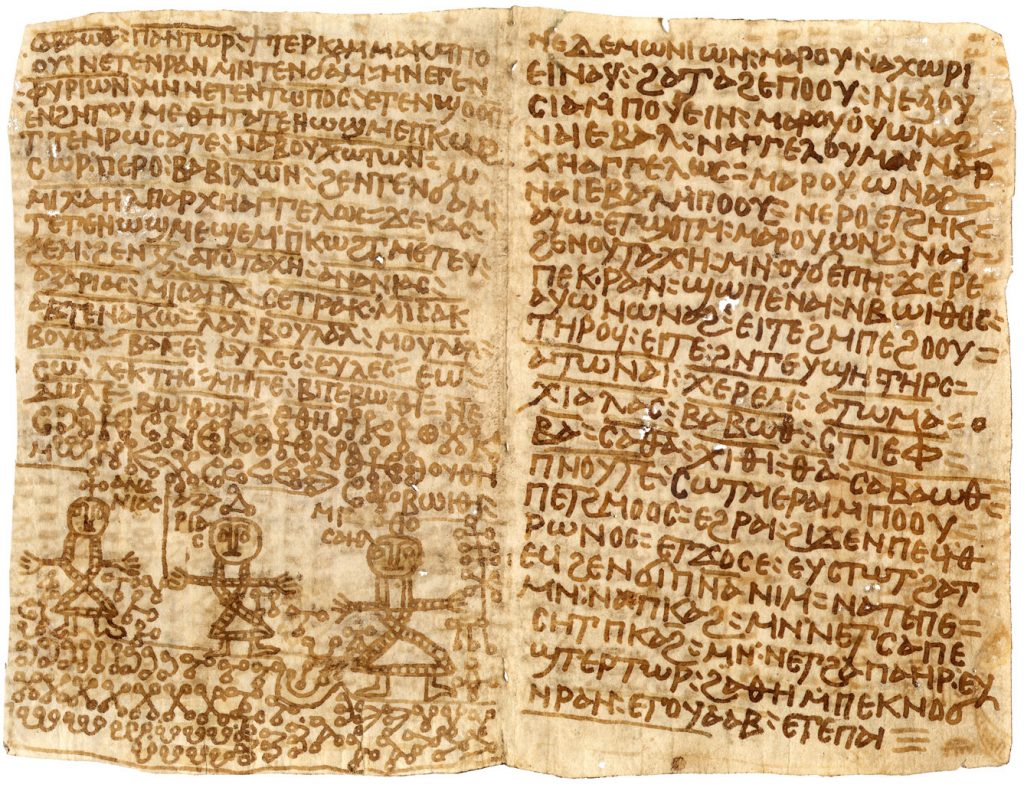
While these amulets have long been known to scholars, Sarrazin pointed out that almost all of them date to between the ninth and tenth centuries, later than the majority of Coptic magical texts, although it is difficult to know what causes this distinctive phenomenon. Sarrazin’s earlier work on Jesus’ role as a healer demonstrated that his appearance in Coptic magic seemed to reference the texts used in the Church liturgy, the ritual texts – prayers and sermons – which the worshippers would have encountered regularly, and which they would therefore have understood to be authoritative. The Three Hebrews too played a role in the liturgy – two prayers from the story in Daniel, the Prayer of Azaria and the Canticle of the Three Youths, play an important role in the Coptic liturgy, but their appearance also in the Greek Orthodox liturgy suggests that they were incorporated before the two churches split after the Council of Chalcedon in 451. Nonetheless, Sarrazin’s work suggests an increased interest in the Three Hebrews in the 9th century, and further research into both magic and the liturgy may be able to suggest why.
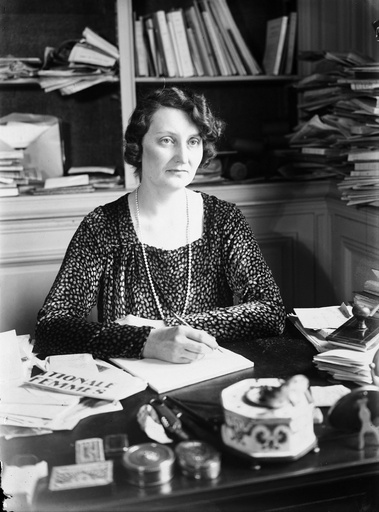
© The Bancroft Library, University of California, Berkeley / Thérèse Bonney / BHVP / Roger-Viollet
The second talk, by Korshi Dosoo of the Coptic Magical Papyri team, was a preliminary look at three unpublished codices belonging to the Collège de France in Paris. These were donated to the Collège in 1978 by Madame de La Rochefoucauld, who apparently had inherited them from Egyptian members of her family. Although described in two short notices, published in 1983 and 2006, none of the texts have been fully published, despite their great importance for the history of Coptic magic. In his talk, Dosoo briefly discussed the contents of the texts, and their significance in this history.
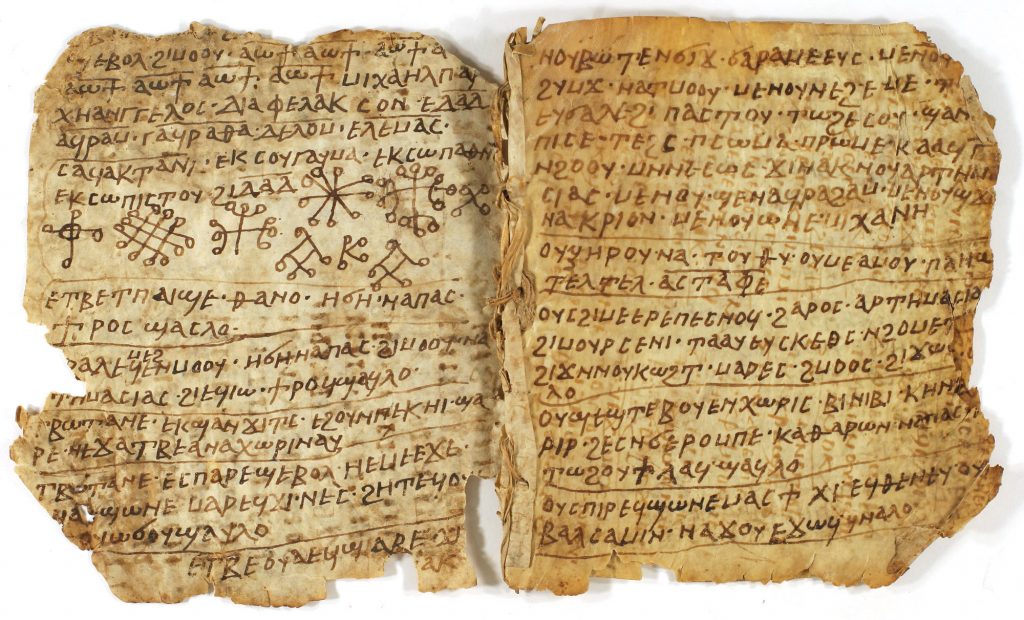
The first codex, consisting of 16 surviving pages, contains magical and medical recipes of a type familiar from other manuscripts – remedies for eye-problems, gynecological complaints, headaches, and so on. The second, written by the same individual, is larger, and contains a series of long prayers known from other texts – a long “magical” prayer called the Glorification of the Archangel Michael, known from a codex in Heidelberg, another known as the Prayer of Mary “in Bartos”, known from 7 other parallels in Greek and Coptic; and a long prayer attributed to the famous Coptic abbot Shenoute, known in other Coptic, Syriac and Ethiopian parallels. The fact that these texts have so many parallels offers the possibility of philological work on their transmission, enabling us to understand who copied magical texts, why, and for what purposes.
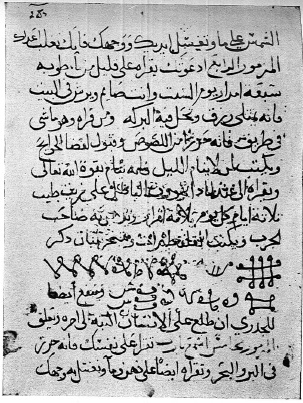
The third codex is the most unusual. It contains a series of short recipes for various problems – ranging from toothache to dealing with jealous wives – which use the Biblical Psalms. Similar texts have long been known from Egypt, but all of the examples published so far are very recent – written in the 18th, 19th and 20th centuries – and written in Arabic. We know that this manuscript dates to the eleventh century, which means that this tradition of using the Psalms in magic is at least 700 years older than we previously realised.

The recipes here follow the same general model as the later Arabic examples – you read the text of the Psalm, while performing a ritual action, such as burning incense, and create an amulet by copying out a series of “magical” signs, known in Greek and Coptic as “characters” (kharaktēres), and in Arabic as “seals” (aḫtam). Despite this general similarity, however, the purposes to which the individual Psalms are put do not usually seem to match in the Coptic and Arabic traditions. There are some small exceptions, however – Psalm 33, for example, is used for dealing with toothache in both the Coptic and Arabic collections, a use which isn’t obvious from the text of the Psalm itself.
The second interesting thing about this manuscript is that it contains a colophon, a brief note at the end written by the scribe, giving their name, the date of the manuscript, and a prayer for the scribe’s future happiness. This is incredibly unusual in magical texts – there is only one other known example among the Greek, Coptic and Demotic magical corpus, in a small Coptic sheet from the Heidelberg collection dating to 967 CE. The colophon of the Collège de France manuscript tells us that it was copied in 1035 CE by a man named Raphae. The colophon is very similar in content to those found in literary manuscripts from Egypt, and both of the Coptic manuscripts colophons were written by deacons, which has very interesting implications for the involvement of the Church in the practice of magic, something we have explored on this blog before.
Together, these two papers demonstrate some of the exciting work to come in the field of Coptic magic studies – the appearance of new texts, and re-analyses of texts already published – both of which have the potential to increase our knowledge and understanding in significant ways.
References and further reading
Bélanger Sarrazin, Roxanne. “Catalogue des textes magiques coptes.” Archiv für Papyrusforschung 63.2 (2017): 367–408. URL
Roxanne Bélanger Sarrazin’s earlier checklist of published Coptic magical texts.
Boud’hors, Anne, and Michel Tardieu. “Retour des parchemins coptes au Collège de France.” La Lettre du Collège de France 18 (December 2006): 16. URL
The notice published in 2006 when the Collège de France manuscripts were returned to the Collège following Michel Pezin’s death.
Gardner, Iain and Jay Johnston. “‘I, Deacon Iohannes, Servant Of Michael’: A New Look at P. Heid. Inv. Kopt. 682 and a Possible Context for the Heidelberg Magical Archive”. Journal of Coptic Studies 21 (2019) 51-53. URL
The most recent discussion of the colophon from P.Heid.Inv.Kopt. 682.
Mihálykó, Ágnes T. The Christian Liturgical Papyri: An Introduction. Mohr Siebeck, 2019.
A recently published book giving an extensive history of the early development of the liturgy in Egypt, something very useful for understanding Christian “magical” practices.
Pezin, Michel. “Les manuscrits coptes inédits du Collège de France.” In Écritures et traditions dans la littérature copte. Journée d’études coptes. Strasbourg 28. Mai 1982. Cahiers de la Bibliothèque Copte 1. Louvain: Peeters, 1983, 23–26.
The original notice of the acquisition of the Collège de France manuscripts, from the same conference 37 years ago!
Pezin, Michel. “Un texte copte de la prière attribuée à Chenouti.” In Mélanges Antoine Guillaumont: Contributions à l’étude des christianismes orientaux. Geneva: Patrick Cramer, 1988, 63–68.
The only published text from the Collège de France manuscripts, a prayer attributed to Saint Shenoute.
van der Vliet, “Varia magica coptica”, Aegyptus, 71, no.1/2 (1991) pp.236-239
A useful article discussing the Three Hebrew Youths in Coptic magic, and in particular their “magical” names.

One Comment
Pingback: